Time to read:10 minutes
Table of Contents
I. Introduction to the World of Pizza Bites
What Is a Pizza Bite?
Definition and Origins
A pizza bite is a small, handheld version of traditional pizza. It combines all the key elements of a regular pizza—crust, sauce, cheese, and toppings—into a bite-sized portion. These miniature pizzas are typically round or square and are designed to be easy to eat in one or two bites.
Pizza bites were first introduced as a convenient snack alternative to the full-sized pizza. Their origins trace back to creative chefs in the mid-20th century who wanted to repurpose leftover dough and toppings. Today, pizza bites are a staple in fast-food menus and frozen snack aisles worldwide.
Cultural Significance of Pizza Bites
Pizza bites have become more than just a snack; they are a cultural phenomenon. In the United States, they are synonymous with parties, game nights, and quick lunches. Globally, different regions have adapted the concept to suit local tastes. For example, in Japan, pizza bites often feature seafood toppings, while in Italy, they are made with traditional herbs and cheeses to reflect their roots.
Pizza bites also symbolize how culinary traditions evolve to meet the demands of modern life. Their simplicity and adaptability make them a favorite across cultures, appealing to children and adults alike.
The Evolution of Pizza Bites
From Traditional Pizza to Miniature Forms
The journey of pizza bites begins with the classic pizza. Traditional pizzas are large, shareable meals that have been enjoyed for centuries. Over time, the need for portable, easy-to-eat snacks gave rise to mini pizzas.
In the 1950s, frozen food companies capitalized on this idea by creating pre-packaged pizza bites for busy households. These early versions were small discs of dough topped with cheese and a basic tomato sauce. Over the years, the variety expanded to include gourmet toppings, stuffed crusts, and dietary-specific options like gluten-free and vegan pizza bites.
Regional Variations in Pizza Bite Recipes
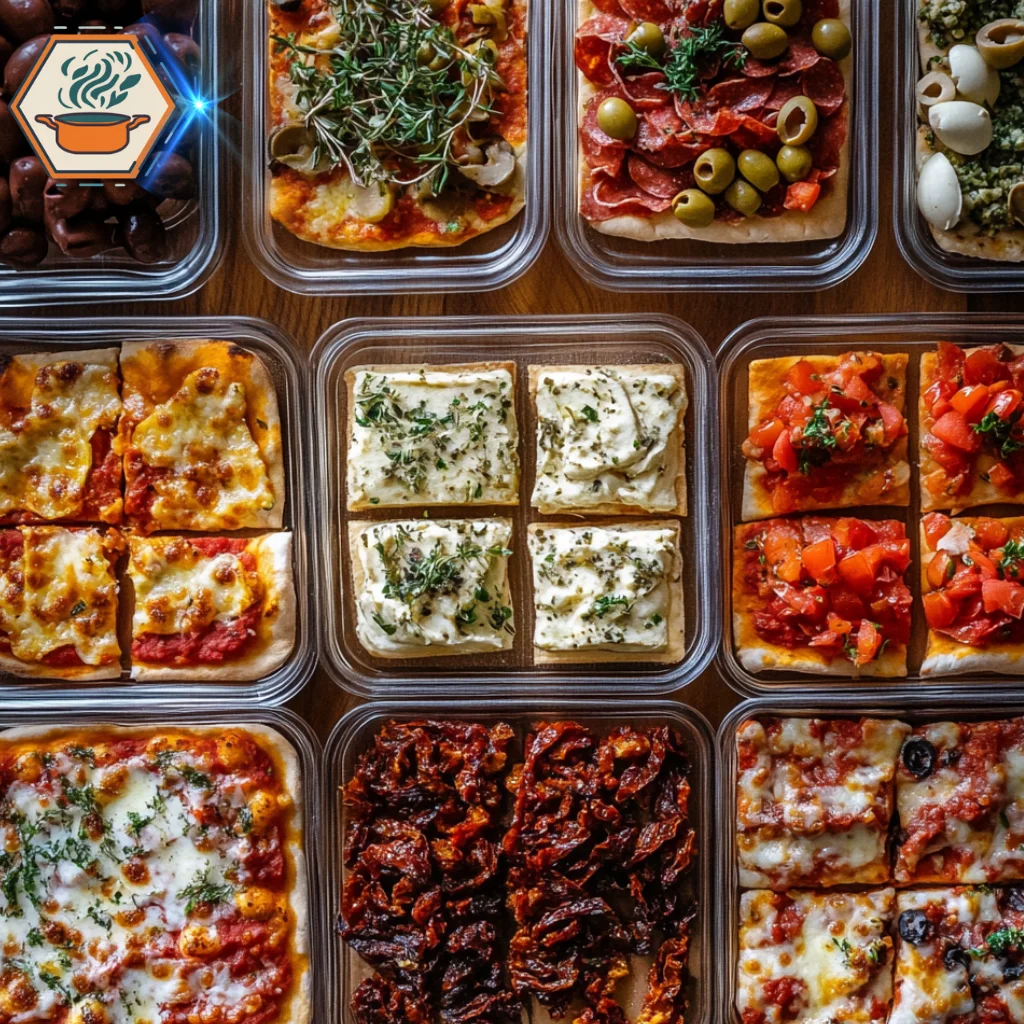
Pizza bites vary widely depending on where they are made. Here are a few regional adaptations:
- Italy: Focuses on simple ingredients like fresh mozzarella, basil, and olive oil for a classic taste.
- United States: Offers a wide range of options, from pepperoni and sausage to creative combinations like buffalo chicken or barbecue.
- Asia: Incorporates unique toppings like squid, teriyaki chicken, or spicy wasabi.
- Middle East: Features za’atar, olives, and feta cheese for a Mediterranean twist.
This diversity showcases the versatility of pizza bites and their ability to adapt to different flavor preferences and cultural contexts.
Why Are Pizza Bites Popular?
Convenience and Appeal
One of the biggest reasons for the popularity of pizza bites is their convenience. Unlike a full pizza, pizza bites are easy to serve, eat, and store. They are perfect for:
- Parties: Guests can enjoy them without the need for plates or utensils.
- Quick Meals: Busy families can heat them up in minutes for a fast lunch or dinner.
- On-the-Go Snacks: Their compact size makes them ideal for travel or work lunches.
Pizza bites also appeal to a wide audience because they can be customized to suit different tastes and dietary needs. From classic cheese to gourmet flavors, there’s something for everyone.
Nutritional Insights
While pizza bites are often considered indulgent snacks, they can be made healthier with the right ingredients. Many brands now offer:
- Whole grain crusts: For added fiber and nutrients.
- Vegetarian and vegan options: To cater to plant-based diets.
- Low-fat cheeses: To reduce calorie content.
For example, you can check our guide on the best way to cook frozen burritos on RecipesMind.com, where we explore creative and nutritious ways to enjoy them.
II. The Anatomy of a Pizza Bite
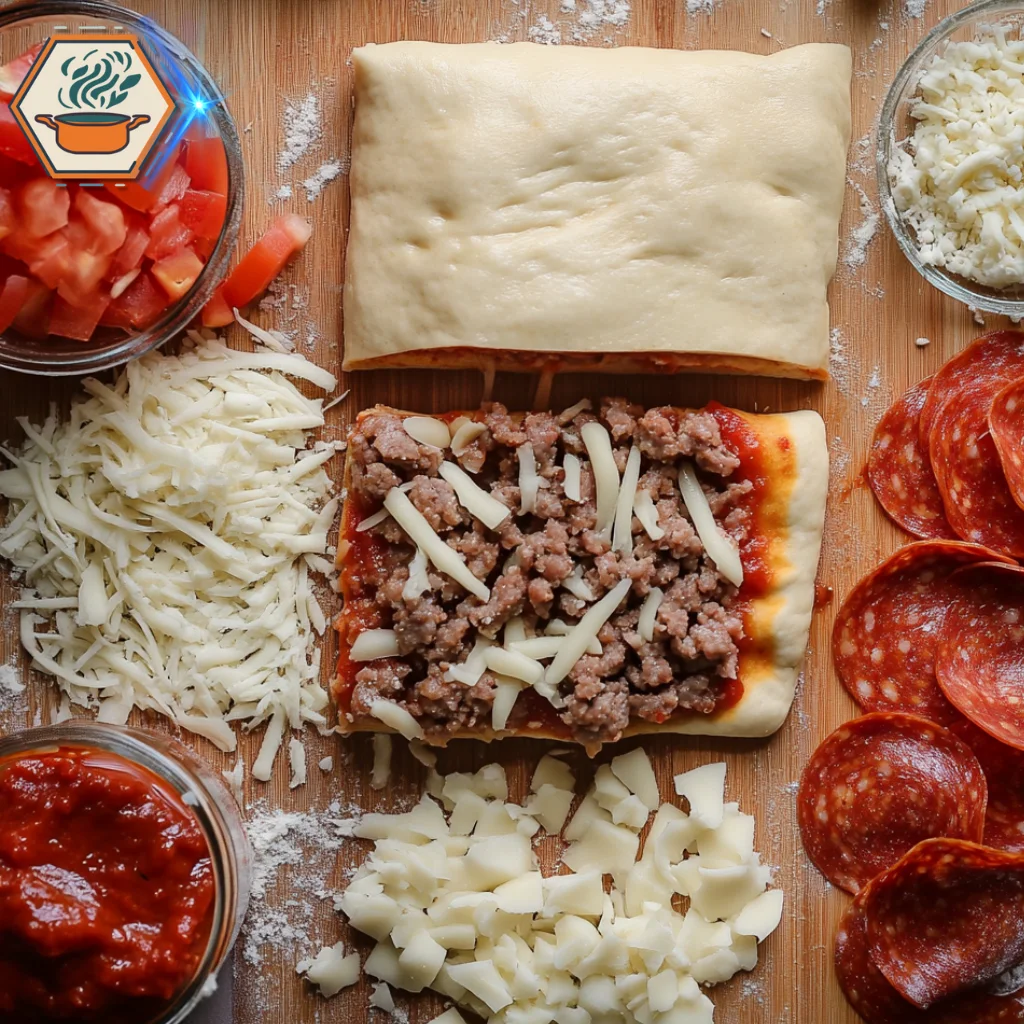
Key Components of a Pizza Bite
A pizza bite is a small package of culinary delight, designed to capture the essence of a full-sized pizza in just one mouthful. Let’s break down the essential elements:
Crust: The Foundation
The crust provides the structure and texture of a pizza bite. It can be thin and crispy, offering a delightful crunch, or soft and chewy for a comforting feel. Typically made from wheat flour, crusts may also incorporate alternative grains like cauliflower or gluten-free flours to suit various dietary needs.
- Classic dough: Offers a neutral base that balances well with toppings.
- Seasoned crust: Adds garlic, herbs, or cheese for enhanced flavor.
For those making pizza bites at home, preparing the dough fresh ensures optimal texture. Pre-made options, however, offer convenience.
Sauce: Variations and Choices
The sauce is the flavorful binder that ties the bite together. Tomato-based sauces remain the most popular, often seasoned with herbs like basil, oregano, and garlic. Yet, there are several innovative alternatives:
- Marinara: Traditional and slightly tangy.
- White sauce: Made from cream or cheese for a richer taste.
- Pesto: Adds a fresh and aromatic twist.
Using high-quality ingredients, such as vine-ripened tomatoes, enhances the sauce’s depth and authenticity.
Toppings: From Classic to Gourmet
Toppings create the personality of a pizza bite. While pepperoni, sausage, and mushrooms are crowd favorites, modern preferences have expanded to include gourmet selections:
- Vegetarian options: Spinach, sun-dried tomatoes, and artichokes.
- Seafood lovers: Shrimp or anchovies.
- Luxury ingredients: Truffle oil or prosciutto.
Layering toppings evenly is crucial to achieve balanced flavors in every bite.
Cheese: The Melting Point of Flavor
Cheese is the unifying component, offering gooey richness to a pizza bite. Mozzarella is the go-to choice due to its excellent melting properties, but other options are gaining popularity:
- Cheddar: Sharp and tangy.
- Parmesan: Adds a nutty, savory edge.
- Non-dairy cheeses: Perfect for vegan diets.
Combining cheeses, like mozzarella and provolone, enhances the texture and flavor complexity.
How Are Pizza Bites Made?
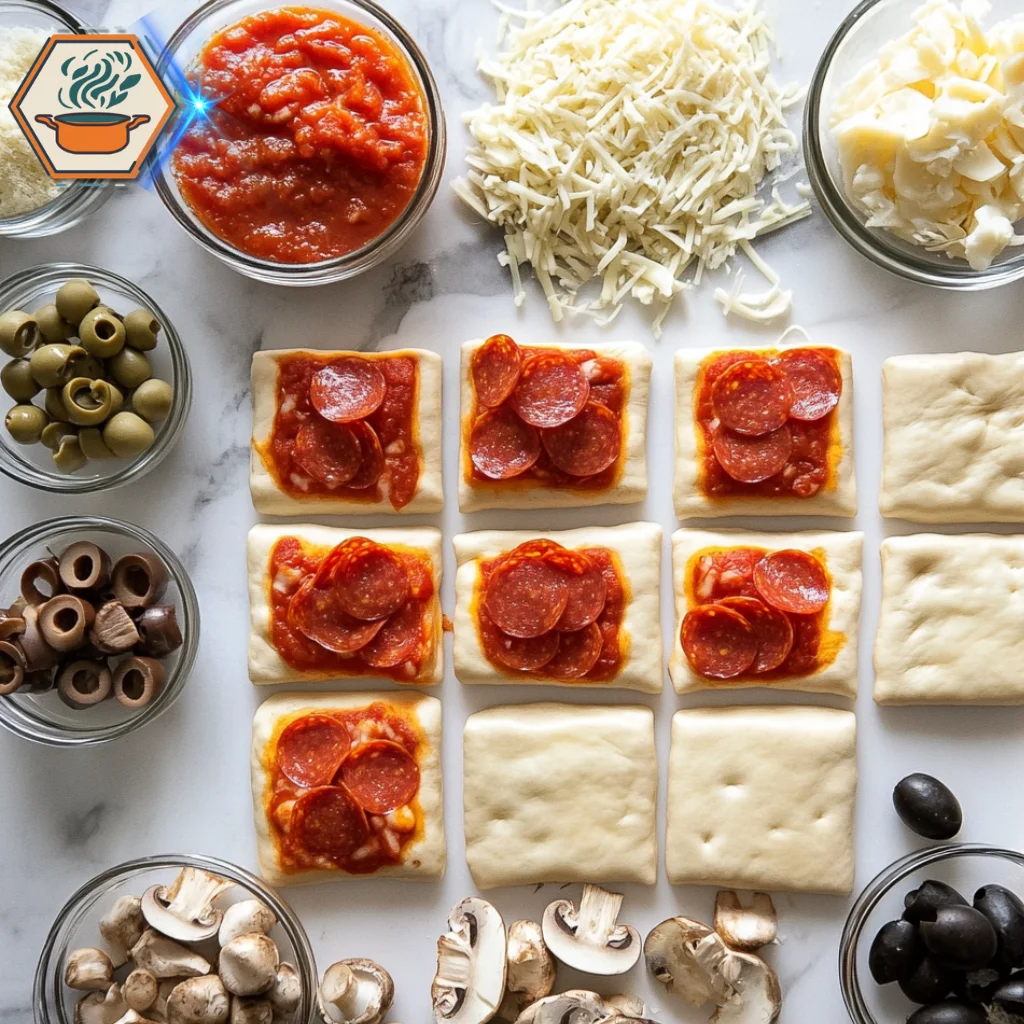
The preparation process for pizza bites varies depending on whether they’re homemade, factory-produced, or store-bought frozen versions. Each method has its unique characteristics.
Traditional Homemade Methods
Creating pizza bites at home allows for full customization of ingredients and flavors. Here is a basic method:
- Prepare the dough: Roll it thin and cut into small circles or squares.
- Add fillings: Place a dollop of sauce, toppings, and cheese on each piece.
- Seal and shape: Fold the dough over the fillings and seal the edges.
- Bake: Cook in a preheated oven at 375°F (190°C) until golden brown.
Homemade versions allow you to experiment with unique flavor combinations, offering endless possibilities.
Industrial Production: Factory Insights
Mass-produced pizza bites are made with precision to ensure consistency in taste and texture. The process typically involves:
- Automated dough preparation: Rolled and shaped with machines.
- High-speed assembly lines: Apply sauce, toppings, and cheese.
- Quick freezing: Ensures freshness before packaging.
While industrial methods prioritize efficiency, premium brands often focus on sourcing high-quality ingredients to mimic a homemade taste.
Quick and Easy Frozen Options
Frozen pizza bites offer unparalleled convenience. These ready-to-heat snacks are perfect for busy schedules. To prepare:
- Preheat the oven as per package instructions.
- Arrange bites evenly on a baking tray.
- Cook for the recommended time, ensuring a crispy exterior.
For optimal flavor, pair frozen options with dipping sauces like ranch or marinara.
The Science Behind the Perfect Bite
The sensory experience of a pizza bite relies on achieving harmony between taste, texture, and size.
Texture Combinations
A great pizza bite balances crispiness and chewiness. The crust should provide a satisfying crunch that contrasts with the soft, gooey center filled with melted cheese and juicy toppings.
- Crisp crusts: Achieved through proper baking temperatures.
- Chewy interiors: Maintained by not overcooking the filling.
Ideal Size and Shape
The size and shape of pizza bites are carefully designed for easy consumption. Typically, a diameter of 1-2 inches ensures they fit comfortably in one bite. Shapes can vary from round to crescent-like, enhancing their appeal.
III. Exploring Pizza Bites in Modern Cuisine
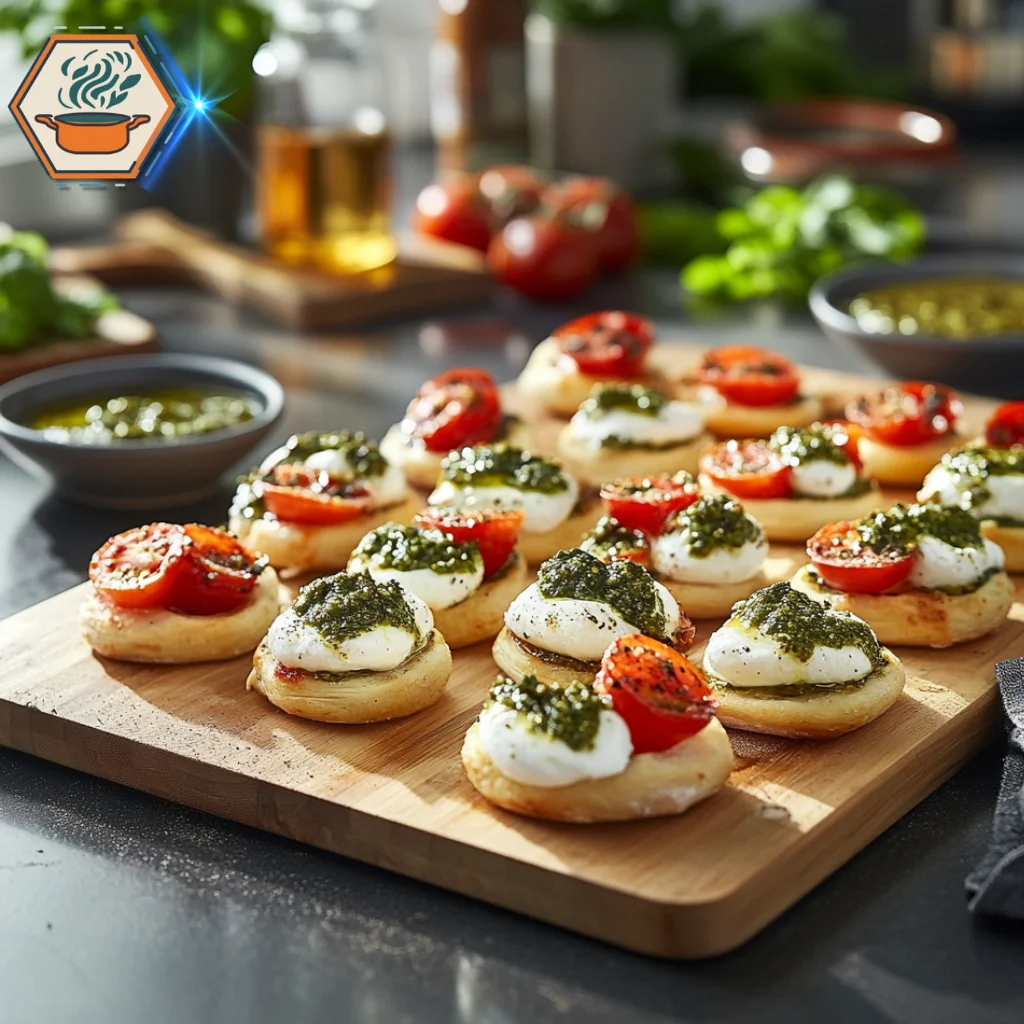
Types of Pizza Bites You Need to Know
Pizza bites have evolved into a versatile snack that caters to various tastes and preferences. Here are the most popular types:
- Classic Pizza Bites: These are bite-sized versions of traditional pizzas, filled with tomato sauce, mozzarella, and toppings like pepperoni or mushrooms.
- Stuffed Pizza Bites: These include creative fillings like cheese, sausage, or even spinach, offering a flavorful surprise in every bite.
- Mini Calzones: A pocket of dough stuffed with pizza ingredients, baked or fried for a crispy finish.
- Dessert Pizza Bites: Sweet alternatives, often made with Nutella, cream cheese, or fruits, adding a unique twist to the classic savory snack.
Store-Bought vs. Homemade
When it comes to pizza bites, you have two options: buy them pre-made or make them at home.
- Store-Bought Pizza Bites:
- Pros: Convenient, quick to prepare, and widely available.
- Cons: Often contain preservatives, higher sodium levels, and may lack freshness.
- Homemade Pizza Bites:
- Pros: Customizable, fresher, and healthier.
- Cons: Requires time and effort to prepare.
Gluten-Free, Vegan, and Other Dietary Options
With rising dietary concerns, pizza bites now cater to specialized needs:
- Gluten-Free Pizza Bites: Made using almond or rice flour, perfect for those with gluten sensitivity.
- Vegan Pizza Bites: Replace cheese with dairy-free alternatives like cashew or almond cheese.
- Keto-Friendly Options: Low-carb crusts made from cauliflower or cheese dough.
- Explore gluten-free recipes on Healthline.
Creative Recipes Using Pizza Bites
Pizza bites aren’t just a snack; they can transform into gourmet dishes with a touch of creativity.
- Pizza Bite Skewers: Thread pizza bites onto skewers with cherry tomatoes, basil, and mozzarella for an easy appetizer.
- Stuffed Peppers with Pizza Bites: Use hollowed-out bell peppers as cups, filled with pizza bites and melted cheese.
- Breakfast Pizza Bites: Add scrambled eggs, bacon bits, and a sprinkle of cheddar for a breakfast twist.
Party Platters and Appetizers
Pizza bites are perfect for gatherings. Arrange them on platters with various dipping sauces, such as marinara, ranch, or garlic aioli. Add fresh veggies or breadsticks to complement the bites.
Innovative Twists
- Stuffed Pizza Bites: Experiment with fillings like jalapeños and cream cheese for a spicy kick.
- Dessert Pizza Bites: Use cinnamon-sugar dough, filled with chocolate or jam, and drizzle with icing.
Pairing Pizza Bites with Drinks
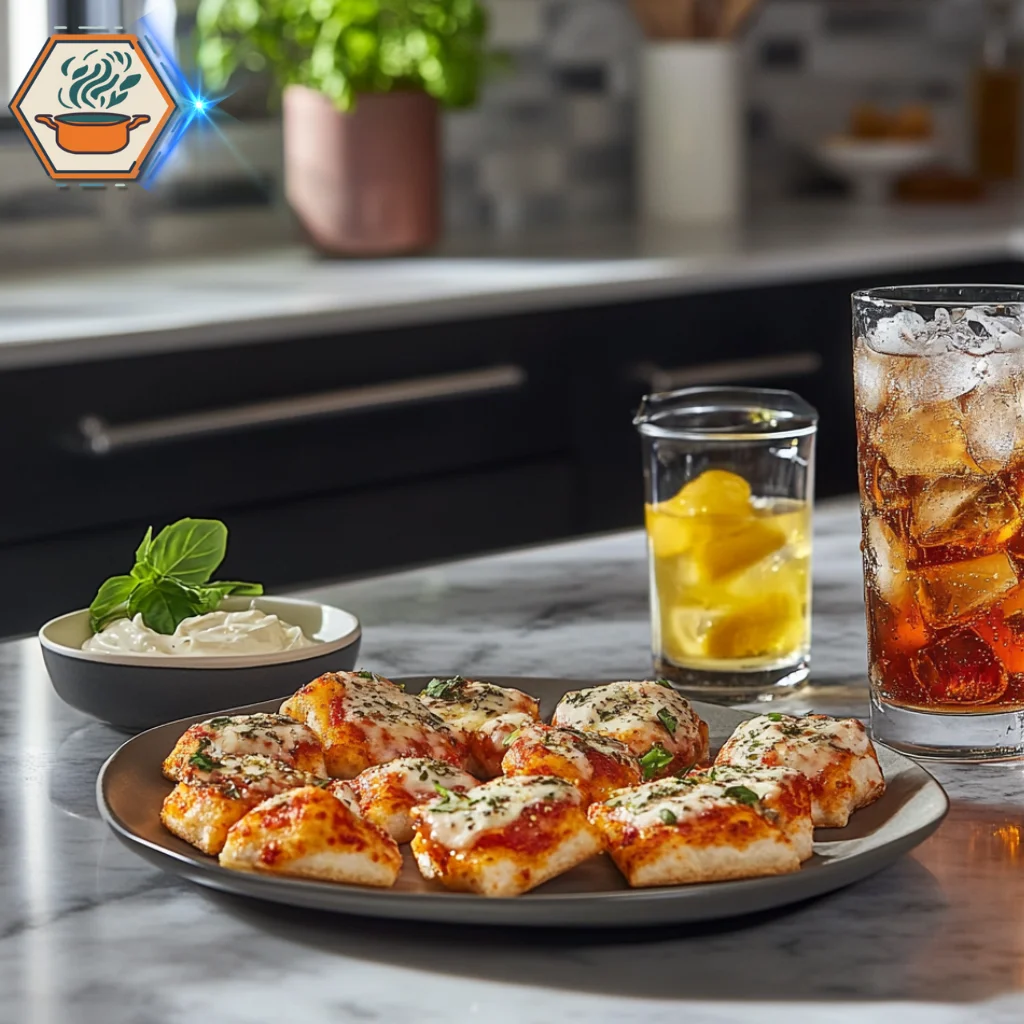
Pairing drinks with pizza bites enhances their flavor.
- Ideal Beverages for Different Flavors:
- Spicy Bites: Pair with sparkling water, herbal iced tea, or a citrus mocktail.
- Sweet ites: Complement with smoothies, hot chocolate, or a honey-infused tea.
- Classic Bites: Go with freshly squeezed lemonade, sparkling apple juice, or iced tea.
- Popular Choices in Different Cultures:
- Italy: Enjoy with espresso or sparkling mineral water.
- USA: Pair with root beer or artisanal sodas.
- Japan: Opt for green tea or a refreshing matcha latte.
Where to Buy the Best Pizza Bites
Finding quality pizza bites is essential for a satisfying experience.
- Top Brands and Stores:
Look for trusted names like Totino’s or Amy’s Kitchen in your local supermarket. - Online Shopping Options:
Websites like Amazon or Instacart offer a variety of options, often with customer reviews to guide your choice.
Bonus Sections
Frequently Asked Questions (FAQs)
- Can pizza bites be reheated?
Yes, use an oven or air fryer for best results. - How do I store leftover pizza bites?
Keep them in an airtight container in the fridge for up to three days.
Tips to Improve Your Pizza Bite Experience
- Use a dipping sauce to enhance flavor.
- Pair with fresh salad or veggies for a balanced meal.
- Customize with herbs like oregano or basil for extra aroma.

